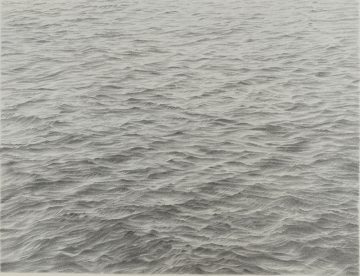Cynthia Cruz at Brooklyn Rail:
 Such work, mimetic in nature, necessitates an abandonment of the world. To scribe, to spend hours of one’s day, every day, copying the words of another artist or, as in Celmins’s practice, painstakingly copying the details of an object and, at the same time, attempting to remove all trace of one’s self, requires the artist to enter the object, and, in doing so, to leave the world. Akin to a small death, this practice is meditative in nature. In trauma, the mind leaves the body, dissociating, as a means to protect one’s psyche from the traumatic event. One antidote to this is to focus on one object: grounding one’s self in the present moment. Over the years, Celmins’s work has become more committed to the practice of fixing herself to the image. In this way, she folds herself into the work the same way the object she is copying is folded into the artwork. As Walter Benjamin writes in “On Copy,” “a copy can be understood as a memory.” Literally, when one makes a copy, one creates a memory of the original object. Indeed, Celmins’s art is deeply rooted in the work of memory: both the labor-intensive work of scribing, which presses the work being copied into the memory of scribe’s mind, and the act of copying, which results, as Benjamin writes, in a memory.
Such work, mimetic in nature, necessitates an abandonment of the world. To scribe, to spend hours of one’s day, every day, copying the words of another artist or, as in Celmins’s practice, painstakingly copying the details of an object and, at the same time, attempting to remove all trace of one’s self, requires the artist to enter the object, and, in doing so, to leave the world. Akin to a small death, this practice is meditative in nature. In trauma, the mind leaves the body, dissociating, as a means to protect one’s psyche from the traumatic event. One antidote to this is to focus on one object: grounding one’s self in the present moment. Over the years, Celmins’s work has become more committed to the practice of fixing herself to the image. In this way, she folds herself into the work the same way the object she is copying is folded into the artwork. As Walter Benjamin writes in “On Copy,” “a copy can be understood as a memory.” Literally, when one makes a copy, one creates a memory of the original object. Indeed, Celmins’s art is deeply rooted in the work of memory: both the labor-intensive work of scribing, which presses the work being copied into the memory of scribe’s mind, and the act of copying, which results, as Benjamin writes, in a memory.
more here.
